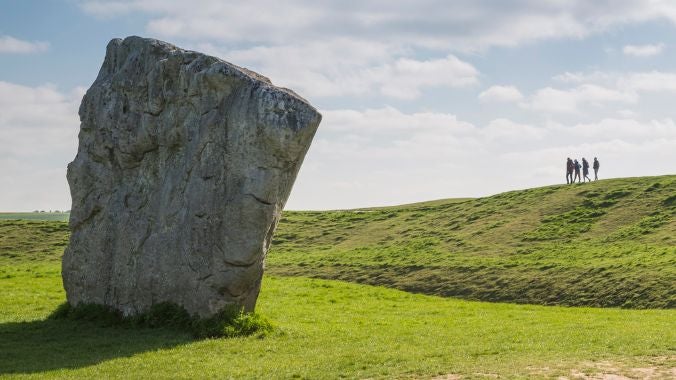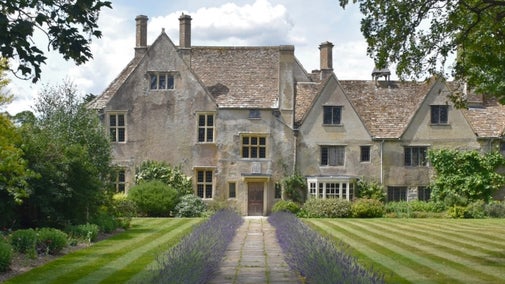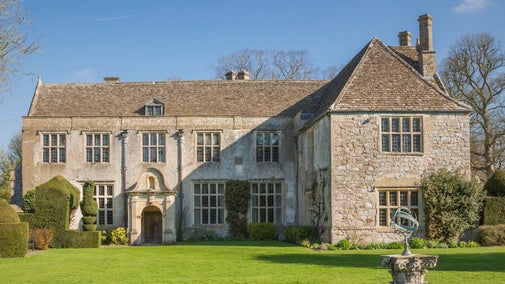
Become a member
Join today and help protect nature, beauty and history – for everyone, for ever. Enjoy access to more than 500 places with National Trust membership.
Ancient stone circle, museum and manor house in the heart of the Avebury World Heritage Site. A Christmas display is available in Avebury Manor from 11am-4pm until 4 January. Last entry is 3pm.
Avebury, Marlborough, Wiltshire, SN8 1RD

| Asset | Opening time |
|---|---|
| Stone Circle | Dawn - Dusk |
| Alexander Keiller Museum | 10:00 - 16:00 |
| Avebury Manor house | 11:00 - 16:00 |
| Avebury Manor garden | 10:00 - 16:00 |
| National Trust shop | 11:00 - 16:00 |
| Cobblestones second-hand books | 11:00 - 15:30 |
| Circles Café | 10:00 - 16:00 |
| Ticket type | With Gift Aid | Without Gift Aid |
|---|---|---|
| Adult (18+) | £14.30 | £13.00 |
| Child (5-17) under 5s free | £7.20 | £6.50 |
| Family (2 Adults and up to 3 children) | £35.80 | £32.50 |
| Family (1 adult + up to 3 children) | £21.50 | £19.50 |
| Group (Adult 18+) | £12.25 | |
| Group (Child 5-17) | £6.18 |
| Ticket type | With Gift Aid | Without Gift Aid |
|---|---|---|
| Adult (18+) | £7.20 | £6.50 |
| Child (5-17) under 5s free | £3.60 | £3.25 |
| Family (2 Adults and up to 3 children) | £17.90 | £16.25 |
| Family (1 adult + up to 3 children) | £10.80 | £9.75 |
| Group (Adult 18+) | £6.18 | |
| Group (Child 5-17) | £3.09 |
| Ticket type | With Gift Aid | Without Gift Aid |
|---|---|---|
| Adult (18+) | £7.20 | £6.50 |
| Child (5-17) under 5s free | £3.60 | £3.25 |
| Family (2 Adults and up to 3 children) | £17.90 | £16.25 |
| Family (1 adult + up to 3 children) | £10.80 | £9.75 |
| Group (Adult 18+) | £6.18 | |
| Group (Child 5-17) | £3.09 |
| Ticket type | With Gift Aid | Without Gift Aid |
|---|---|---|
| Adult (18+) | £6.00 | |
| Child (5-17) under 5s free | £3.00 | |
| Group (Adult 18+) | £5.70 | |
| Group (Child 5-17) | £2.85 |
Cobblestones second-hand books is located by the High Street car park. A large range of books are available to purchase and we always welcome donations of pre-owned books.
Circles Café can be found in the Old Farmyard and serves a range of light lunches, pastries, cakes and drinks.
The main car park is located to the south-west of the village on the A4361. Sat Nav users please use the postcode SN8 1RD Blue Badge parking can be found in the High Street. Sat Nav users please use the postcode SN8 1RF
Dogs are welcome at Avebury, apart from Avebury Manor and Circles Café, as long as they are on a lead and under control. Assistance dogs are allowed in the manor and café.
Dogs allowed - more informationThere are guided tours of the stone circles and henge most days, subject to volunteer availability (please ask at the Visitor Reception in the Old Farmyard).
The National Trust shop can be found in the Old Farmyard, with a wide range of gifts, souvenirs, plants and local products.
There are toilets with disabled access and baby changing behind the Visitor Reception in the Old Farmyard. There are also toilets available in the High Street during the summer season.
Blue Badge parking/drop-off point. Accessible toilets. Stone circle partially accessible. Avebury Manor Garden, Alexander Keiller Museum, shop and café accessible.
Please ask at Visitor Reception in the Old Farmyard for an accessible route map.
There are accessible toilets in the Old Farmyard. Accessible toilets are also available in Avebury High Street during the summer season.
There are braille guides available, please ask in Visitor Reception.
Induction loops at all visitor points across the site.
There is level access to Circles Café.
There is level access to the National Trust shop.
Two sectors of the stone circle have level access. Avebury Manor Garden has level access routes.
A Tramper mobility scooter is available free of charge on a first-come, first-served basis. Ask at Visitor Reception upon arrival.
There is seating available across the site (but not in the stone circles).
Some areas of the stone circles and henge have steps and uneven terrain and we advise visitors to wear appropriate footwear, particularly after wet weather.
Wheelchairs are available to borrow. Ask at Visitor Reception or any member of staff.
Return to Avebury Manor this Christmas for decorations, lights, and festive memories, as the doors open for the first time since January 2024.

From henge tours to family-friendly fun, take a look at what's coming up at Avebury.

At Avebury we do everything we can to make sure everyone can enjoy their time. If there is anything else you need to know please do get in touch on 01672 539250.

Avebury is a two pawprint rated place. With miles of space to explore, dogs love walks at Avebury. Find out where they can go and where to find water bowls and treats.

Groups visits and tour parties are very welcome at Avebury and there are some steps you need to take before you visit.

Avebury Manor was badly damaged in January 2024 following storms and widespread flooding in the local area. The manor has been closed since then while essential repairs and restoration work were carried out. It will reopen on Saturday 29 November with a special one-off Christmas display.
Internationally significant complex of prehistoric monuments, which demonstrate Neolithic and Bronze Age ceremonial and mortuary practices between 3700–1600 BC
The largest stone circle in the world with other monuments within it including a cove and two stone circles, surrounded by a huge henge bank and ditch.
Stone avenue leading from the Avebury stone circle south-west towards the Sanctuary monument. You can still walk along the first 800m of this ancient route.
A 16th Century manor house refurbished in the styles of different historical periods, reflecting the lives of past residents. Distinctive formal garden.
A small museum of international significance, housing finds from across the Avebury part of the World Heritage Site (contains human remains).
A 17th Century thatched threshing barn, which now houses the Visitor Reception. Just outside the barn is the 16th Century dovecote, built from sarsen stone.
Shop filled with treats for the home and garden, seasonal plants, local produce and gifts. Cobblestones second-hand bookshop has a wide range of books for sale.
Circles Café has seating inside with a view over the stone circle from the first floor. Serves light lunches, pasties, cakes and hot drinks. There are picnic tables outside.
Visiting Avebury and the surrounding landscape is a unique experience. The area contains multiple Neolithic and Bronze Age features including the largest stone circle in the world which you can enter and explore.

Discover artefacts from archaeological excavations in the museum. Step inside the large threshing barn and see the 16th-century dovecote near the wildlife pond.

With plenty of space, fresh air and history all around, Avebury is a perfect place to bring the family, whatever the time of year.

Take a look at upcoming events and activities at Avebury.
Return to Avebury Manor this Christmas for decorations, lights, and festive memories, as the doors open for the first time since January 2024.

Enter the festively decorated Dovecote to meet St. Nicholas, hear a special Christmas story, and receive a Christmas gift to take home.

Pick up some unique Christmas presents from a selection of local gift stalls while listening to carols and festive music.

This walk circles the base of Silbury Hill, affording a real sense of scale of this important prehistoric structure, part of the World Heritage Site of Avebury.

Starting at the heart of the World Heritage Site, this walk takes you through the remains of the largest stone circle in the world and along ancient roads into rolling chalk downland.

The Circles Café serves lunches, cakes, snacks and drinks. Visit the National Trust shop for sustainable products and gifts, or browse Cobblestones second-hand bookshop.


A simple cottage for two, in the heart of Avebury’s prehistoric ramparts and stone circles.

In the centre of Lacock village, this 15th-century cottage is packed full of charm and makes a cosy base for exploring Lacock Abbey and the countryside nearby.
A group of magical hares have arrived in Avebury Manor Garden, carrying a special Christmas message.
Enter the festively decorated Dovecote to meet St. Nicholas, hear a special Christmas story, and receive a Christmas gift.
Return to Avebury Manor this Christmas for decorations, lights, and festive memories as the doors open for the first time since January 2024.
Join a winter walk around the Avebury henge with Dr Nick Snashall, National Trust archaeologist for the Stonehenge and Avebury World Heritage Site
At Avebury, the world's largest prehistoric stone circle partially encompasses a pretty village. Archaeologist Alexander Keiller excavated here in the 1930s, and there is a museum bearing his name.
The Alexander Keiller Museum displays archaeological treasures from across the World Heritage Site.
Avebury Manor will be open from Saturday 29 November until Sunday 4 January following flood repairs. A special Christmas display will be available to visitors, before the house closes temporarily in January for final renovations to be completed.
Watch our British Sign Language guide to visiting Avebury.
Find out more about the history of the area including research from two archaeological and geophysical surveys in 2017. Discover new findings at this important site.

A collaboration with Findmypast has uncovered new and forgotten stories about the people living at Avebury Manor at the beginning of the twentieth century.


Explore the objects and works of art we care for at Avebury on the National Trust Collections website.

If you or your workplace are interested in volunteering at Avebury and the Wiltshire landscape, here’s everything you need to know about joining the team.


Join today and help protect nature, beauty and history – for everyone, for ever. Enjoy access to more than 500 places with National Trust membership.
By sharing your email address you’re agreeing to receive marketing emails from the National Trust and confirm you’re 18 years old or over. Please see our for more information on how we look after your personal data.